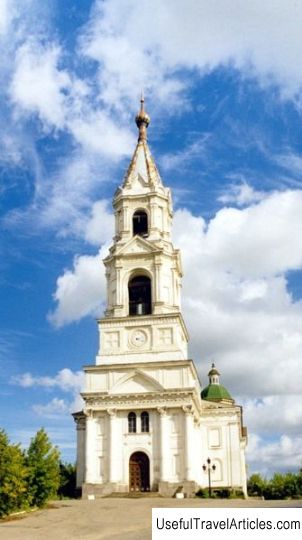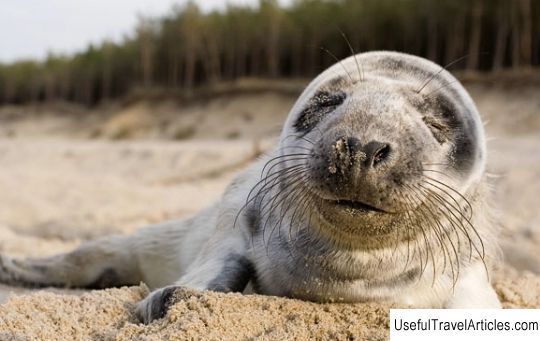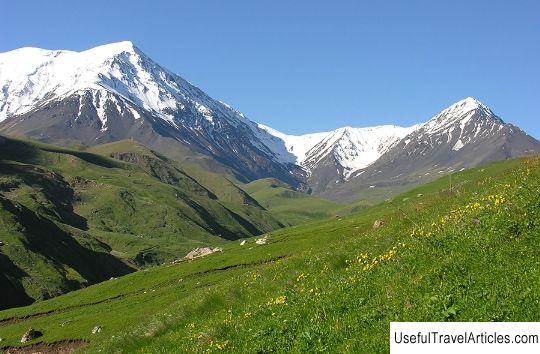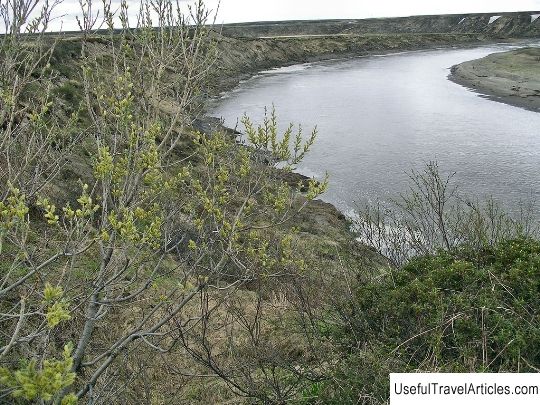Viydumyaesky Reserve description and photos - Estonia: Saaremaa Island
Rating: 8,2/10 (2354 votes) 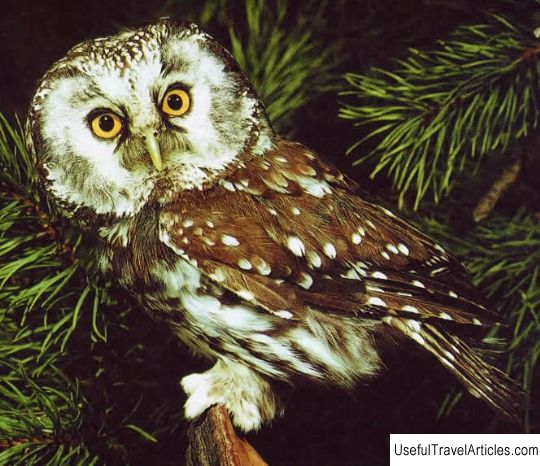
Viydumyaesky Reserve description and photos - Estonia: Saaremaa Island. Detailed information about the attraction. Description, photographs and a map showing the nearest significant objects. The name in English is Viydumyaesky Reserve. Photo and descriptionViidumae Nature Reserve was founded in 1957. Although a special flora has been known and interesting to botanists since the middle of the last century. Such a late date for the foundation of the reserve is associated with the adoption of the law on nature protection in the Estonian SSR only in 1957 The reserve is located in the western part of the Saaremaa island. The main purpose of its creation was the preservation and study of relict communities and rare plant species. The reserve is primarily famous for its plants. The fauna is of little interest. The most common fauna of Saaremaa live here. In the reserve there are 16 species of animals (squirrel, badger, roe deer) and 61 species of birds (2 of them are rare - Upland Owl, Tawny Owl). Flora is represented by 662 plant species. The area of the reserve is 0.6 thousand hectares, moreover, the area covered with forests is 0.5 thousand hectares, length from northeast to southwest is 6.5 km and width is 700-1200 m. Due to the richness and originality of the flora, foreign and many of our botanists call this place a natural botanical garden. The hill on which the reserve is located rose from the sea about 8000 - 9000 years ago, and nowadays its highest point is 54 m above sea level. Viidumae slopes central hill about. Saaremaa is primarily interesting for its geomorphological formations. These slopes, against the background of the flat relief of the island, are distinguished by protrusions of bedrock and subsoil; the composition of the soil cover is represented by layers of Silurian limestone, moraine and sand. Many small springs originate on the Viidumae Upland, which at the foot of the slope form a rather extensive key bog with significant deposits of peat. The characteristic elements of the landscape of the Viidumae Nature Reserve are the slopes covered with forest and wooded meadows and the key bog with shrubs. The climate in the western part of Saaremaa, including the Viidumae Nature Reserve, is maritime and mild. The period without night frosts lasts 175-200 days. The warmest month is July, the temperature of which is 18-19 °. Annual precipitation is 490–640 mm. Permanent snow cover, on average from December 27 to March 23, lasts 78-85 days. Rare species of relict plants of the Baltic region grow on the very slope and in the key bog. On the slope and plateau of the Viidumae Nature Reserve, forests of various types grow: alvar, lichen, heather. Alvar forests occupy 95 hectares. The forest layer is represented by Scots pine, European spruce, and also warty birch and English oak grows. In the shrub layer, mostly common hazel and slightly less common juniper. The herbaceous layer is dominated by six-petalled meadowsweet, common copse, blood-red geranium, spring primrose and some other species that prefer lime-rich soils. The alvar type of forest is also characterized by the rare common ivy in the Baltic States, as well as the mountain ash aria, a very rare tree that does not occur anywhere in the former USSR, except in this reserve. Heather and lichen types of forests are widespread small spots in small areas (11, 5 hectares). The heather type of forest dominates, in which the pine tree, a little less spruce, there is a lot of juniper in the shrub layer. The herbaceous layer consists of a small number of plant species. The most widespread in the reserve are bilberries, lingonberries, oxalis and green moss (total area 187 ha); lingonberry dominates. Pine is the predominant tree in all described types of forest, spruce, aspen and birch are also found. The undergrowth is characterized by shrubs typical of the Baltic conditions. The grass cover is represented by various types of forest plants; prevailing are either common lingonberry, or common oxalis, or blueberries, or green mosses. Although, in general, the grass cover is mostly sparse and poor in species. A rare type of forest is a pine forest with oak undergrowth. It grows on a plateau and at the foot of a slope. This type of forest is considered relict, the occurrence of which is impossible in the present climatic period. In the forest layer, along with pine, there is an oak 10–12 m high; spruce is also found. The herbaceous and shrub layer is quite diverse (blood-red geranium, six-petalled meadowsweet, low goat). In addition to those listed, other types of forests are also widespread in the reserve: complex with broad-leaved elements (75 hectares), lowland forests ( 29 hectares) and forests of transitional bogs (19 hectares). Here grow such rare plants as hairy wort, black rank, Kashubian peas, official peas and St. John's wort. Key shrub The bog is a valuable botanical treasure of the Viidumae Nature Reserve. Its area is 77 hectares. Rarer plant species include the following plants: sword - grass, pemphigus, Lesel's liparis, mytnik Charles scepter. The endemic to the island is the Eselian rattle. This plant grows only on about. Saaremaa. Rare plants are intermediate sundew, alpine chiryanka, aromatic kokushnik, rough-toothed horsetail and a hybrid of rusty and blackish schenuses. The main task of the reserve is to study and preserve relict communities and rare plant species ... Observations and all kinds of research are conducted here every year. Currently, a large-scale vegetation map of Viidumae Nature Reserve has been compiled. This is a great place to take a walk and enjoy the purest air, be alone with nature,         We also recommend reading Catholic Cathedral of St. Sophia description and photos - Ukraine: Zhytomyr Topic: Viydumyaesky Reserve description and photos - Estonia: Saaremaa Island. |
